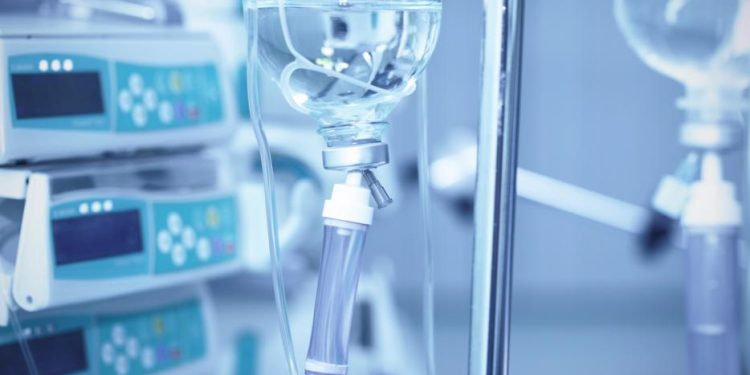Hodgkin lymphoma can be cured in most people when it’s diagnosed and treated early. Survival rates depend on the subtype and stage of the cancer at diagnosis, symptoms and other factors, such as sex and age.
Doctors know that hodgkin lymphoma starts when infection-fighting white blood cells develop changes in their DNA. These changes can cause the cells to grow and spread to nearby lymph nodes, spleen, liver or bone marrow.
Causes
Hodgkin lymphoma starts in the lymphocytes — white blood cells that help protect the body against germs, viruses and cancers. These cells grow and multiply too fast. They can crowd out healthy lymphocytes and cause the lymph nodes to swell.
Most of the time, Hodgkin lymphoma begins in a group of lymph nodes in your neck, armpits or groin. But it can happen almost anywhere in the lymphatic system, which is a network of thin tubes that collects fluid from different parts of the body and returns it to the bloodstream. It includes lymph nodes, which are small, bean-shaped organs that sit in the middle of your chest and belly, as well as lymphatic vessels and the bone marrow that makes new blood cells.
The cause of most cases of Hodgkin lymphoma isn’t known. But it usually happens when a change (mutation) occurs in the DNA of lymphocytes, which are the cells that make up your immune system. The DNA gives the cells a basic set of instructions, including when to grow and divide. But the mutation changes these instructions, leading the lymphocytes to grow out of control and form a tumor.
There are four types of Hodgkin lymphoma based on the type of cell that grows most quickly: classical Hodgkin lymphoma; nodular sclerosing Hodgkin lymphoma; mixed cellularity Hodgkin lymphoma; and non-linear B-cell lymphoma, nodular lymphocyte-predominant (NLPHL). Some infections may also increase your risk for this condition, such as Chlamydia psittaci, which causes a rare lung infection called psittacosis, or Campylobacter jejuni, which is linked to MALT lymphoma in the gastrointestinal tract.
When Hodgkin lymphoma is diagnosed and treated early, it’s one of the most curable cancers. If the disease isn’t curable, most people will live for a long time with treatment-related side effects that aren’t permanent.
Even after treatment, you still need regular exams so your healthcare provider can check for signs of the lymphoma returning or for long-term side effects from treatment, such as scarring in the skin or bones. Your doctor can tell you more about these risks and how to reduce them.
Symptoms
Hodgkin lymphoma affects the lymphatic system, a network of nodes (knots of tissue) that drains fluid and waste from your body tissues. The lymphatic system produces important white blood cells that fight infections caused by bacteria, viruses and fungi. When the lymphatic system is fighting an infection, the nodes and tissues become swollen. Symptoms of Hodgkin lymphoma vary depending on the type of Hodgkin lymphoma and how far the cancer has spread.
Most people with Hodgkin lymphoma develop swollen lymph nodes in their neck, armpit and groin areas. These nodes may be painless or painful and could be accompanied by other symptoms, such as fever, chills, weight loss, itching, drenching night sweats, fatigue or shortness of breath. Hodgkin lymphoma can also swell the thymus and bone marrow, which are organs in your chest and hip bones respectively. Less often, Hodgkin lymphoma forms in the tonsils, the two masses of lymph tissue at the back of your throat.
If you have signs or symptoms of Hodgkin lymphoma, it is important to talk to your health care provider right away. Most people with early-stage Hodgkin lymphoma are cured with treatment. However, it’s important to have regular exams to check for the cancer returning or other long-term effects of treatment.
To diagnose Hodgkin lymphoma, your doctor will ask questions about your symptoms and do a physical exam. The physical exam includes checking for swollen lymph nodes in the neck, underarms, groin and spleen. Your doctor may suggest a biopsy of a suspicious lymph node for laboratory testing that looks for signs of Hodgkin lymphoma.
NYU Langone hematologist-oncologists, or blood cancer specialists, will take a sample of your blood and perform a variety of other tests to look for Hodgkin lymphoma in the lymphatic system and other types of blood cancers. NYU Langone pathologists, or doctors who examine tissue under a microscope, will also conduct a variety of tests to pinpoint the exact location of your lymph node tumors and other abnormalities. This information is used to determine the stage of your Hodgkin lymphoma, which helps guide treatment.
Diagnosis
Diagnosing HL usually starts with your family doctor, who will ask questions and do a physical exam. Because many different health problems can cause similar symptoms, it’s important for your healthcare team to rule out other causes before making a diagnosis of HL. Your doctor may refer you to a specialist or order tests to check for HL and other health conditions.
The first step in the diagnosis of HL is to take a sample of lymphocytes (white blood cells) from an enlarged lymph node or other tissue. These cells are then tested to see if they’re cancerous. If your doctor thinks you have HL, they’ll also do other blood and tissue tests to learn more about the type of HL you have, which helps them plan your treatment.
Another test that’s often done is a chest x-ray, which can show if there’s an infection or if a lung mass has formed. CT scans of your thorax, abdomen, and pelvis can also help with diagnosis. These tests can check for signs of HL and other health problems, such as a spleen or liver problem. They can also tell if the lymphoma has spread to other parts of your body.
To confirm the diagnosis of HL, doctors use a biopsy to remove some lymph node cells and tissue for further study in a lab. It’s usually a simple procedure, but they might need to give you a general anaesthetic if your affected lymph node is in a hard-to-reach part of your body.
A pathologist (a doctor who specialises in examining tissue and cells under a microscope) will check the biopsy samples for evidence of cancerous lymphocytes. They can also determine the exact type of Hodgkin lymphoma you have, which is helpful in planning your treatment.
Based on the results of the tests, your doctor will describe the extent of the cancer in a system called staging. The stage of your Hodgkin lymphoma helps doctors decide how serious the cancer is and which treatments are most likely to work. It’s important to know your stage because early Hodgkin lymphoma is often cured when it’s diagnosed and treated quickly.
Treatment
Hodgkin lymphoma can be treated very successfully, especially if it is diagnosed early and if you get the right treatment. Most people who have Hodgkin lymphoma are cured.
Hodgkin’s lymphoma develops in the lymphatic system, a network of nodes (knots of tissue) and vessels that drain fluid and waste from parts of your body, such as the arms and legs, the groin, and the belly (abdomen). The lymphatic system also produces white blood cells that help fight infection and disease.
In most cases, the first sign of Hodgkin lymphoma is a painless swollen lymph node that appears without a cause. It can then spread to nearby lymph nodes, or to other parts of the body, such as the spleen, liver, and bone marrow.
If you have Hodgkin lymphoma, your healthcare provider will order a number of tests to find out whether or not it is cancer and how far the disease has spread. These tests may include a physical exam, blood tests, and imaging scans.
You will likely have chemotherapy as your main treatment for Hodgkin lymphoma. Chemotherapy is a type of medicine that kills cancer cells and stops them from growing. In most people, regular chemotherapy causes few side effects. However, some people may have severe problems with their blood counts. They may need to have blood stem cell or bone marrow transplants to replace the healthy blood cells that were destroyed by the chemotherapy.
Most people with Hodgkin lymphoma go into remission within two to three years of starting treatment. A remission means that the lymphoma cannot be detected in the body and there are no signs of it returning. You will need to see your doctor for follow-up visits.
Some people with Hodgkin lymphoma have a type that does not respond to standard chemotherapy. In these cases, your doctor may recommend high-dose chemotherapy followed by a stem cell or bone marrow transplant to give you new, healthy blood cells. This treatment may increase your chance of remission by 50% or more. This type of treatment is called B-cell depleted chemotherapy.









